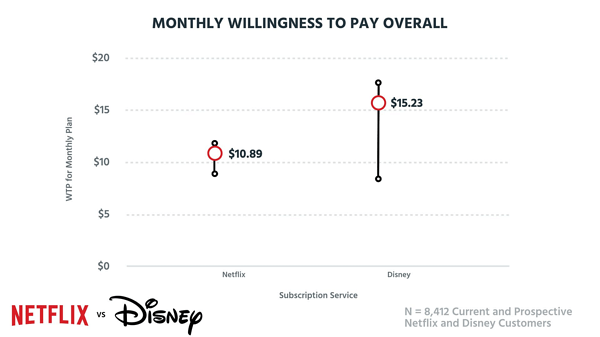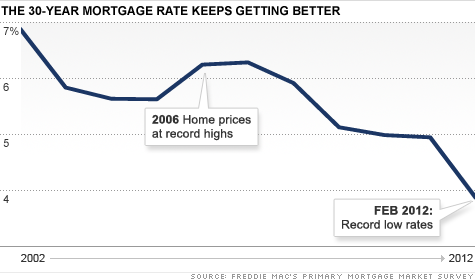

In a recession, banks may not want to lend, and even if banks do want to lend, firms do not want to borrow and invest. In fact, in a recession, firms may do the same as consumers and try to save more and pay back dent. A fall in demand from higher saving, will cause lower prices, which encourage demand to increase. This is related to Say’s Law which states supply creates its own demand. If an individual decides to increase savings from $1000 to $2000 every month, the monthly budget falls from $2500 plus $500 in cash to $1750 plus $250 in cash. When people earn more, they tend to consume more, leading to economic growth.
Capital machines, which drive higher levels of production, require additional savings and investment. The circular flow model only works in a framework without capital goods. In this connection, Keynes pointed out ‘paradox of thrift’ and showed that as people become thriftier, they end up saving less or same as before. If all the people of an economy increase the proportion of income which is saved (i.e., MPS), the value of savings in the economy will not increase, rather it will decline or remain unchanged.
- This theory states that an increase in current spending drives future spending.
- When consumers save , it harms the businesses that served the needs and wants of consumers.
- Saving is exactly matched by investment—there cannot be any discrepancy between saving and investment.
- This extra spending will generate further manufacturing, creating a continuous cycle by way of a process generally known as the Keynesian multiplier.
- The theories of John Maynard Keynes, known as Keynesian economics, center around the idea that governments should play an active role in their countries’ economies, instead of just letting the free market reign.
Thus, investment is no longer assumed here as an autonomous one. Corresponding to this point, equilibrium income thus determined is E1 If people decide to save more rather than to consume, the saving function would shift to S2S2. Under standard neo-classical economic growth theory, saving is essential to economic growth and technological innovation. Most modern theories of innovation argue that a threshold level of capital needs to be reached before innovation can occur.
The authorities may use monetary coverage, although, lately, many governments have delegated financial coverage to an independent Central Bank. In addition to making an attempt to resolve recessions, the government may even try to avoid inflation. High client financial savings levels, often spurred by the assumption of a unfavorable economic event on the horizon, causes monetary coverage to be generally ineffective.
Lecture 8 The Paradox of Thrift
To him, savings do not cause investment since savers and investors are two different persons in the community. Keynes went on saying further that if a nation decides to save more the nation will be struck by disaster. Increase in individual saving is not equivalent to an increase in saving of the community. In fact, what is true for an individual is not necessarily true for the society as a whole.
In the near term, the saver can finally buy the latest and greatest gadget, and in the long term, the saver can be more financially secure during retirement or unplanned unemployment. This criticism in turn has been questioned by New Keynesian economists, who reject Say’s law and instead point to evidence of sticky prices as a reason why prices do not fall in recession; this remains a debated point. The argument begins from the observation that in equilibrium, total income must equal total output.
Therefore, a fall in consumption, leads to a fall in private saving ! The implication of the Say’s Law is that what the society saves is automatically invested. Saving is exactly matched by investment—there cannot be any discrepancy between saving and investment. Equilibrium national income occurs when planned saving equals planned investment.
What is the Paradox of Thrift?
An increase in the rate of saving reduces consumption in the economy which, in turn, reduces total output . According to British economist John Maynard Keynes, when people save during a recession, the level of consumer spending decreases, which eventually slows down economic growth. Keynes credited Mandeville for the concept in his book “The General Theory of Employment, Interest, and Money” . The paradox of thrift is an economic theory which argues that personal savings can be detrimental to overall economic growth.

The principle that increased supply increases demand is known as Say’s law. Pursuant to this theory, economic productivity is based upon aggregate demand by consumers. Line I shows the relationship between investment spending and Gross Domestic Product . When people wish to increase savings from S to S1, it leads to a fall in real investment and income . Keynesian economics comprise a theory of total spending in the economy and its effects on output and inflation, as developed by John Maynard Keynes. The circular flow model of economics shows how money moves through an economy in a constant loop from producers to consumers and back again.
But If society decides to reduce consumption patterns to increase savings, there is a shift from curve SS to S1S1. Businesses are unable to make a profit, and so they lay off workers, which increases unemployment and reduces government tax paradox of thrift diagram revenue. The unemployed, who now lack wages, have stopped spending entirely. This aggravates the problem, even more, leading to a downward economic spiral. The subsequent lower prices increase demand and can require increased production.
Despite the significance of understanding the paradox of thrift, it has received many criticisms especially form the neoclassical economists. Therefore, producers should either lower the price or change the goods and services being produced. Thus, the action of not consuming does not reduce future output but merely forces the market to optimize. For a lot of the first two decades after World War II there was appreciable enthusiasm among the public for Keynesian coverage, which was seen as a approach to keep away from the financial chaos of the Great Depression. In Great Britain for example, the publish-struggle election was fought largely on the grounds of the two primary celebration’s conflicting economic policies.
Paradox of Thrift क्या है?
Saving is treated as a virtue by households as they provide a protective umbrella against bad spells but same is treated as a vice by the economy as it retards the process of income generation.
1 The Paradox of Thrift before J.M. Keynes
It was later recognized by several classical economists and became an integral part of Keynesian economics. According to the Census Bureau’s “Families and Living Arrangements” dataset, the percentage of 25- to 29-year-olds living with their parents increased from 14 percent in 2005 to 19 percent in 2011. Tejvan Pettingersaid…Here the thrift is when the private sector decide to save more – causing a fall in Aggregate Demand. Prices may be sticky downwards and not fall, even if there is lower demand. Also, if prices fall, deflation can discourage spending because real value of debt rises.
He estimated how a lot a authorities should spend to extend “efficient demand” and achieve full employment. When uncertain consumers and traders aren’t spending in a melancholy, where should the money come from to pump up “efficient demand”? When unsure shoppers and buyers sharply cut back on their spending, efficient demand drops. He wrote that counting on conventional monetary solutions like decreasing rates of interest was not enough. In unsure times, companies and individuals shy away from borrowing and lending money.
The second criticism is that savings represent loanable funds, particularly at banks, assuming the savings are held at banks, rather than currency itself being held (“stashed under one’s mattress”). Thus an accumulation of savings yields an increase in potential lending, which will lower interest rates and stimulate borrowing. So a decline in consumer spending is offset by an increase in lending, and subsequent investment and spending. They would also argue that putting your money into a bank is the best thing for you and for the economy because banks aren’t designed to just sit on your money. They are designed to lend your money out and put it to work.
By reducing benefits they further reduced consumer spending and AD. This made areas of high unemployment even more impoverished. When people saved rather than spent their money it just made the recession worse. In the great depression of the 1930s, GDP fell, unemployment rose and the UK experienced a long period of deflation. In response to this disastrous economic situation, mainstream economists were at a loss as how to respond.
However, most economists that support Keynes’ ideas have questioned Say’s theory while pointing out sticky prices as some of the reasons for the paradox to exist. The other criticism to the paradox is related to funds that could be loaned out by banks. Therefore, the marginal propensity to save is likely to move the point of equilibrium at which income equates output as investment equates savings at lower levels. The paradox is similar to the prisoner’s dilemma since the savings made by individuals could be beneficial to them.
At decrease interest rates investment is higher, which translates into more complete output so the IS curve slopes downward and to the proper. Marginal propensity to eat is a part of Keynesian macroeconomic concept and is calculated because the change in consumption divided by the change in earnings. MPC is depicted by a consumption line, which is a sloped line created by plotting the change in consumption on the vertical “y” axis and the change in income on the horizontal “x” axis. This theory was closely criticized by non-Keynesian economists on the bottom that a rise in financial savings allows banks to lend extra. This theory was heavily criticized by non-Keynesian economists on the ground that an increase in savings allows banks to lend more. This will make interest rates go down and lead to an increase in lending and, therefore, spending.
Increase in savings would therefore imply that the amount of funds available for lending by banks would increase. This implies that an increase in savings could result in an increase in the level of investment in an economy, which is a contrary argument to the paradox of thrift. Keynes argued that saving depends on income, rather than the rate of interest as suggested by the classical economists.
Keynes popularized this concept while discussing the great depression of the 1930s. Harry said…I do not agree that this is the paradox of thrift. To me, thrift is where state spending falls, and private sector spending rises to accomadate this fall? One policy the National government did approve was the cutting of unemployment benefits.
Therefore, there exists two types of possible equilibriums for a growing economy. Either the public sector is funding the growth of the private sector via a slight deficit or its current account balance is positive and the country is a net exporter of goods and services. Both the narrow and broad claims are paradoxical within the assumption underlying the fallacy of composition,… This increased lending provides capital for increased spending by businesses. The paradox of thrift postulated by the British Keynesian economist, John Maynard Keynes. His theory was based upon Keynesian economic theory that productivity is driven by aggregate demand.